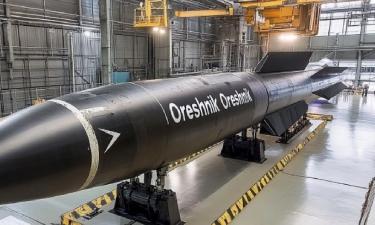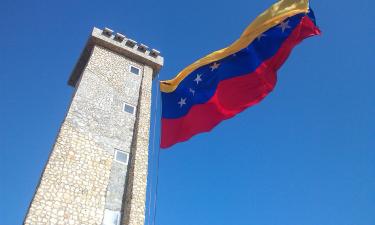Tu-104 aircraft with admirals of Soviet Pacific Fleet crashed 40 years ago
Forty years ago, on February 7, 1981, the Tu-104 plane of the commander of the Pacific Fleet (Pacific Fleet) of the USSR crashed during takeoff from the military airfield near Leningrad. The crash killed 16 admirals and generals on board, the whole leadership of the fleet. The tragedy came as a huge shock for the Soviet Pacific Fleet, because the fleet did not lose so many admirals even during the Second World War. The Ministry of Defense of the USSR suggested that the crash occurred as a result of subversive activities, so the department was expecting aggression on the eastern coast of the USSR. In fact, everything turned out to be much more prosaic.
Cross in the sky, fireball on the ground
On that fateful day, the plane of the Pacific Fleet commander flew for only eight seconds. Immediately after takeoff, the airliner banked backwards and crashed on the ground half a kilometer from the site of take-off. The plane banked so significantly that eyewitnesses at the airfield described the position of the Tu-104 in the air as a "cross in the sky."
A massive fire started right after the crash and the explosion. All 50 people on board - 44 passengers and 6 crew members - were killed. Eyewitnesses who tried to get to the accident site said that the tail of the plane broke off from the fuselage, and there was a huge funnel with burning kerosene underneath it. The entire plane was on fire.
On board the crashed aircraft there were 15 admirals and generals, 12 captains of the first rank and colonels, and the commander of the Pacific Fleet, Emil Spiridonov. The Tu-104 of the Commander of the Pacific Fleet was returning from staff exercises, in which the leadership of all the fleets of the Soviet Union participated. Sergei Gorshkov, the Commander of the Soviet Navy, then said that the Pacific Fleet under the leadership of Emil Spiridonov was the best fleet during the exercises.
It is worthy of note that during the Second World War, the entire Soviet fleet lost four admirals, while six others died by natural causes or for reasons unrelated to military operations.
The officials, who were killed in the plane crash near Leningrad, had unique experience. In the first post-war years, the Soviet government relied on the accelerated development and upgrade of the navy - and it was the Pacific Fleet that was used to test new types of weapons.
Following the disaster, the Pacific Fleet was put on full alert - the Ministry of Defense suspected sabotage. Some time later, special services and all kinds of commissions concluded that foreign saboteurs simply could not access the plane at such a guarded facility as the Pushkin military airfield. However, the version of sabotage was not discarded, and investigators continued working on it.
It turned out that Rudolf Golosov, the chief of staff of the Pacific Fleet and the first candidate for length of service to replace Spiridonov, refused to fly the Tu-104 at the last moment. It was believed that Golosov was the most likely candidate to replace the Commander-in-Chief of the USSR Navy, Sergei Gorshkov.
Golosov had an alibi: on the day of the disaster at the Pushkin airfield, another airplane was to fly to the North. Golosov was born in those places and had relatives there, including his daughter.
Golosov decided to see his family and asked Spiridonov for leave in advance, which saved his life. The version that it was Golosov, who staged the sabotage, was discarded.
All the materials of the investigation were marked as "Top secret", and the media did not write a word about the tragedy.
The disaster was mentioned only in the obituary published in the Krasnaya Zvezda newspaper, but no names or places were specified.
"On February 7, 1981, a group of admirals, generals, officers, warrant officers, navy men and employees of the Pacific Fleet were killed in a plane crash while on duty. The USSR Ministry of Defense and the Main Political Directorate of the Soviet Army and Navy expresses deep condolences to the families and friends of the deceased comrades," the obituary said.
Tu-104 crashed becasue of printing paper and furniture
Fragmentary evidence suggests that there were two or three rolls of printing paper loaded on board the aircraft. Each of those rolled weighed about 500 kilograms. The USSR had a shortage of printing paper during those years, and Spiridonov snatched a few rolls for the Pacific Fleet newspaper. In addition, he was also transporting several furniture sets, which were even harder to find in the Union than printing paper. It was not easy to buy furniture sets even in Moscow, let alone remote regions such as the Far East. It was impossible for an ordinary citizen of the USSR to deliver such a large and heavy purchase from Leningrad to Vladivostok.
Several eyewitnesses said that the paper rolls in the Tu-104's luggage compartment had not been properly secured. When the plane was taking off, they started rolling and possibly shifted the center of gravity towards the tail.
Lieutenant General Viktor Sokerin, Honored Military Pilot of Russiaб believes that the Tu-104 did perform the take off - the aircraft took off from the runway against the will of the pilot. Due to the shifted center of gravity, the nose of the aircraft lifted up too early, and the laws of aerodynamics pulled the aircraft upwards.
But the incidence angle was too large, the plane was unable to gain altitude smoothly, and its speed was only enough to lift off the ground and fly for a few seconds. The testimony from eyewitnesses, who said that the plane flew up vertically like a cross in the air fits well with this version.
If the admirals had loaded a few more rolls of printing paper or some more furniture sets, the plane would have tilted on its tail right when on the airfield, because the airplane is like a pharmaceutical scale.
According to another version, the Tu-104 was overloaded. Under such conditions, the passengers should have moved to the front of the cabin at the time of takeoff, let the plane gain altitude and then taken their seats. Yet, the crew commander, Lieutenant Colonel Anatoly Inyushin, had nearly 6,000 flight hours on the Tupolev Tu-104. It is unlikely that he had no knowledge about the rules for takeoff for the overloaded aircraft. The crew commander may have tried to convince the admirals to meet those requirements, but they simply did not listen to him.
Subscribe to Pravda.Ru Telegram channel, Facebook, RSS!




